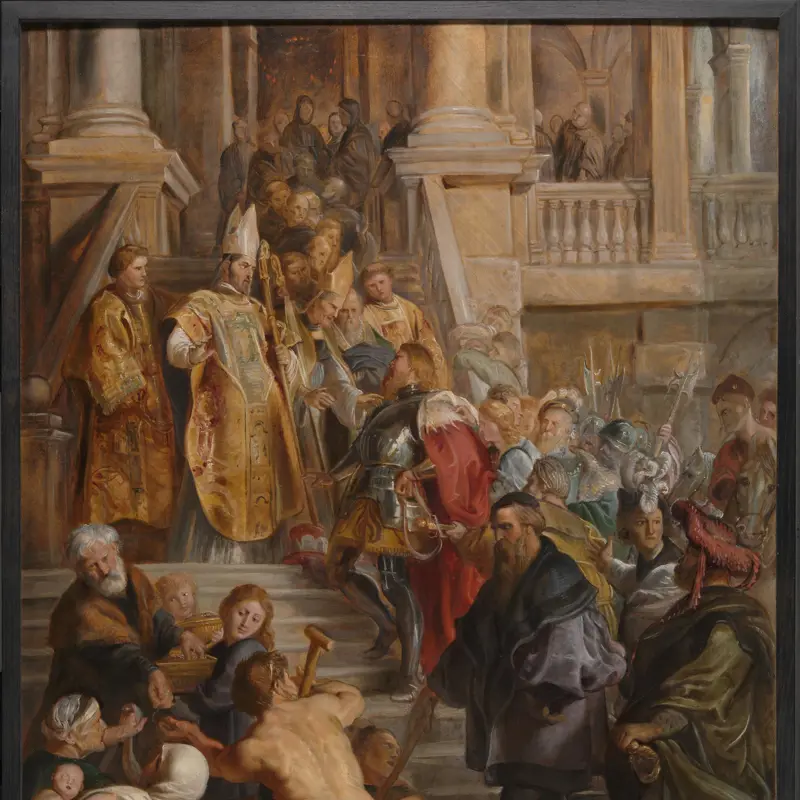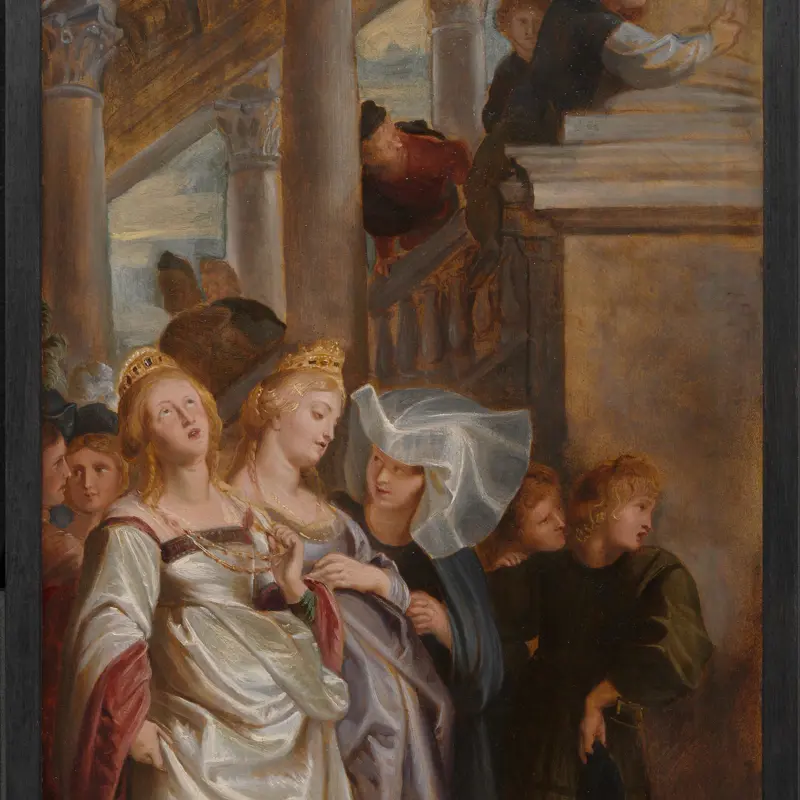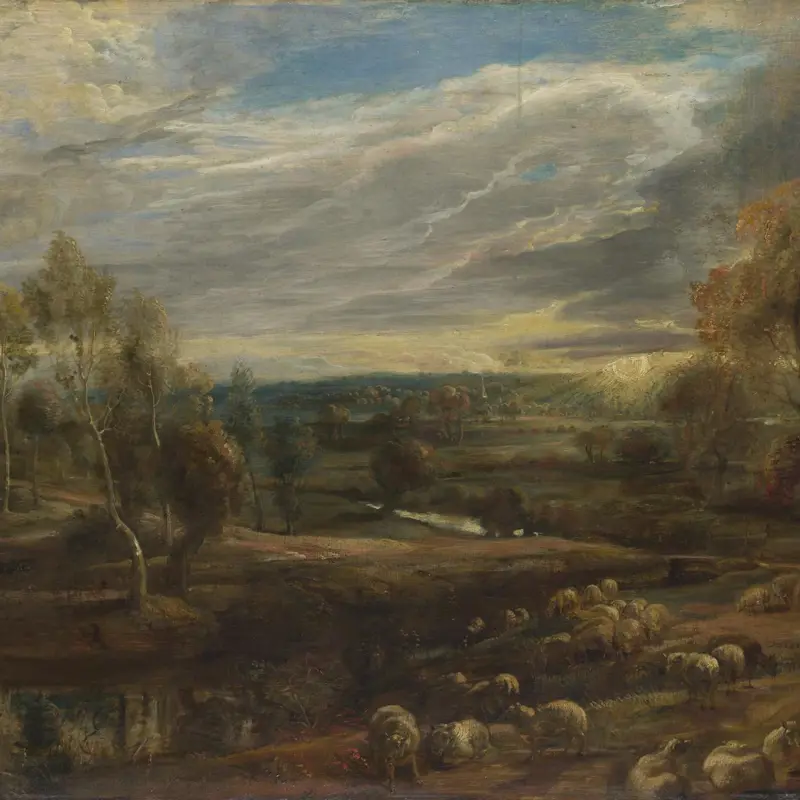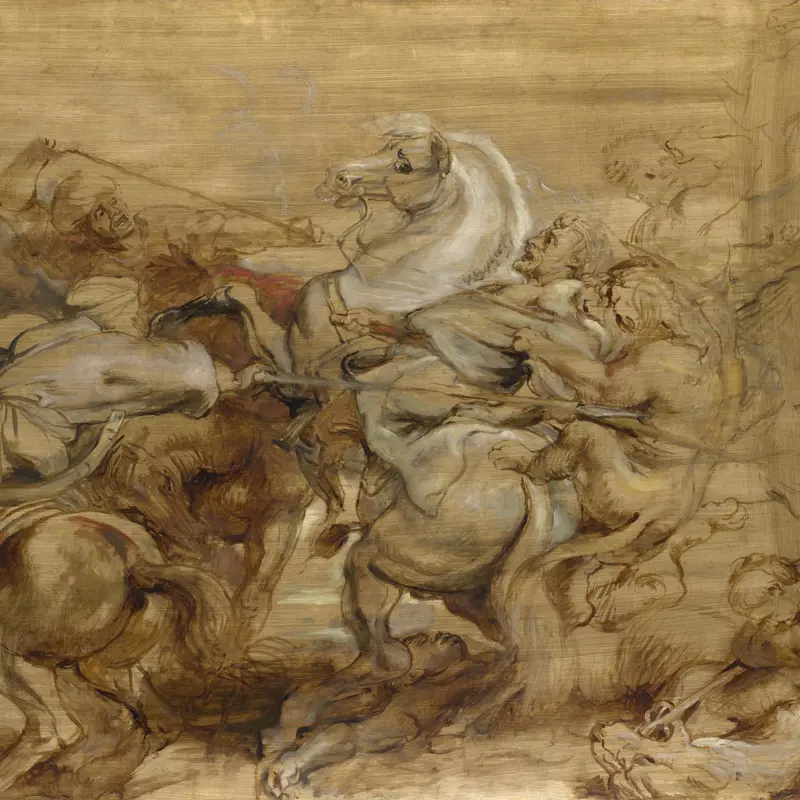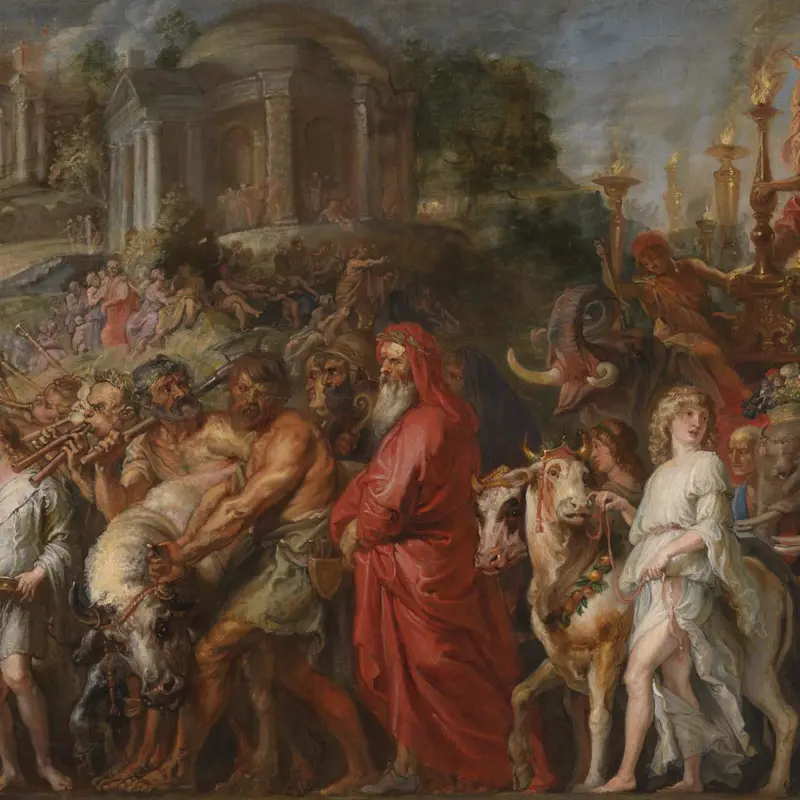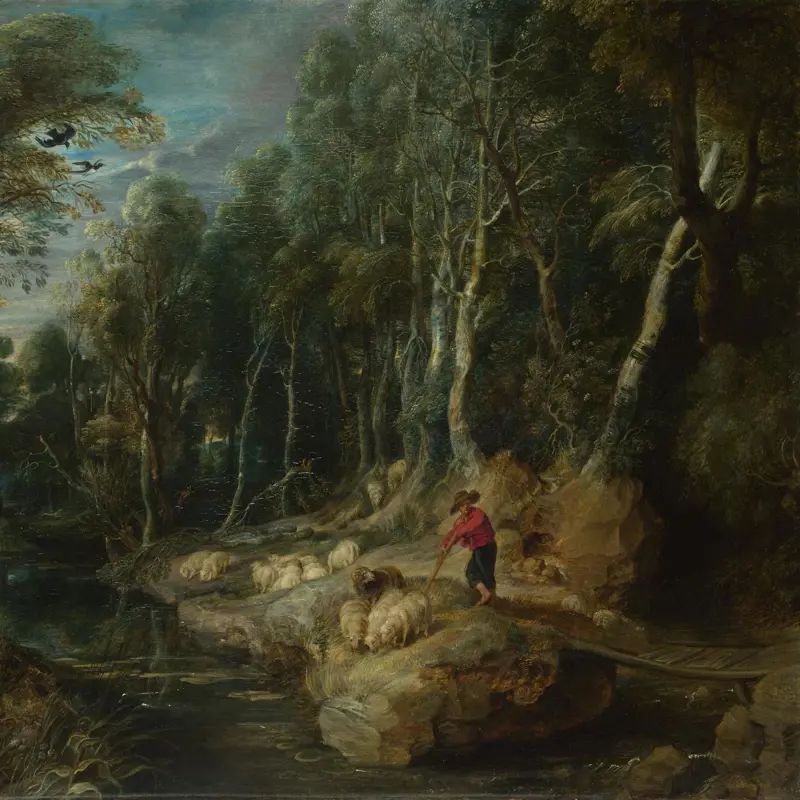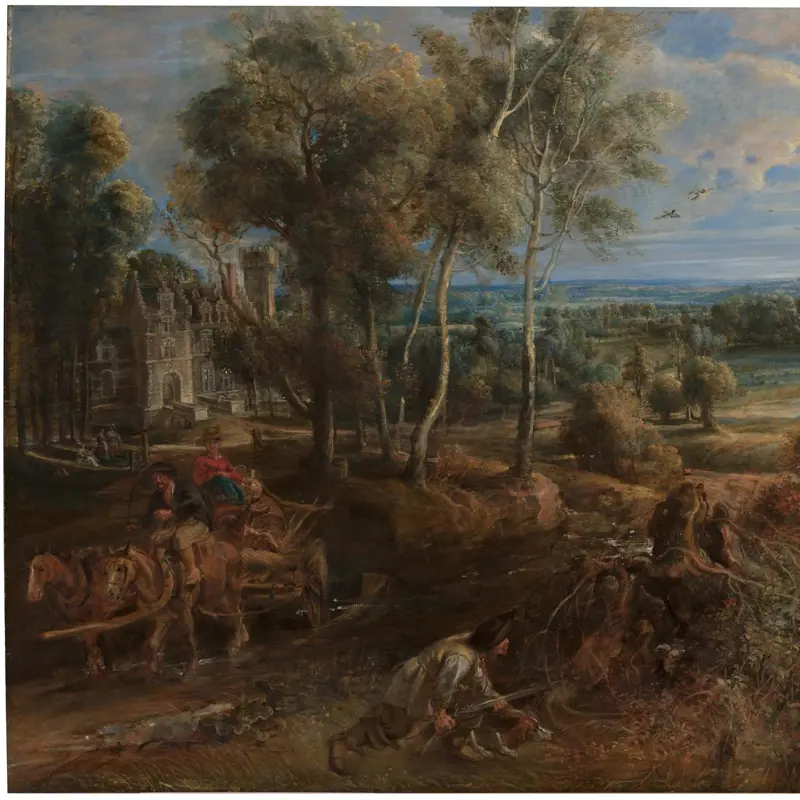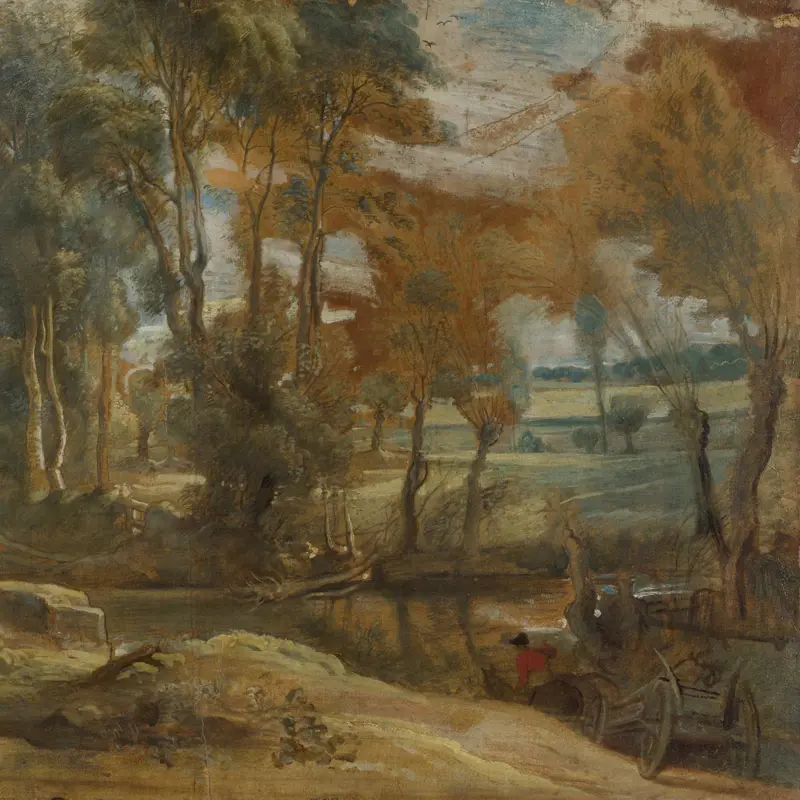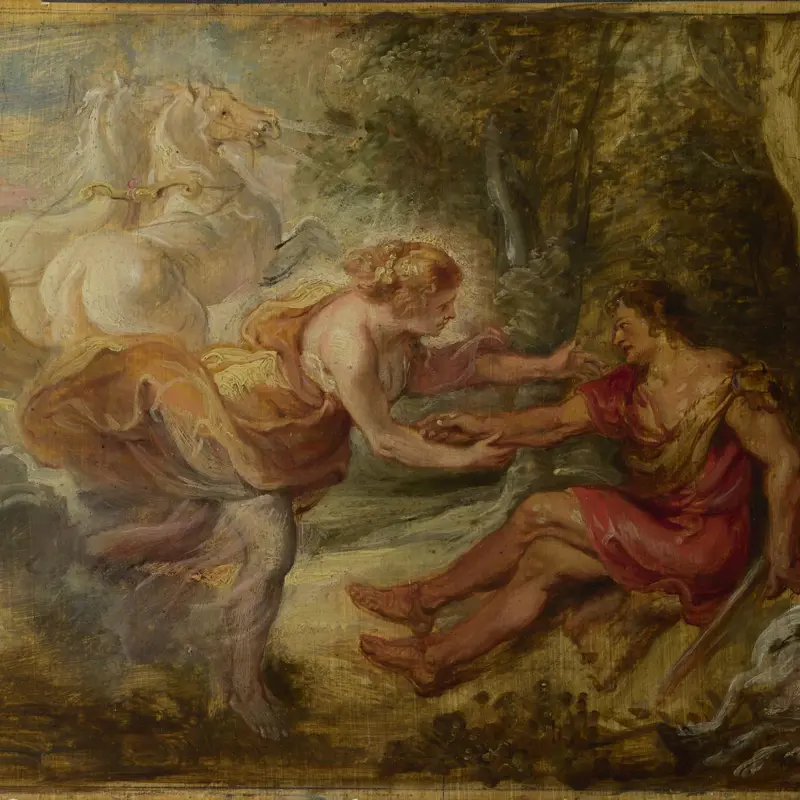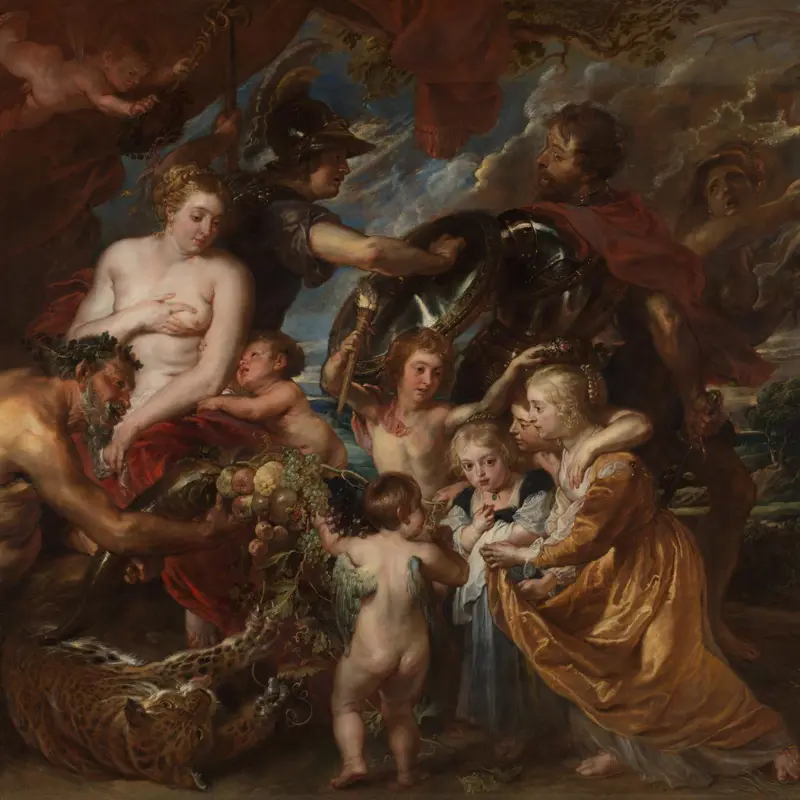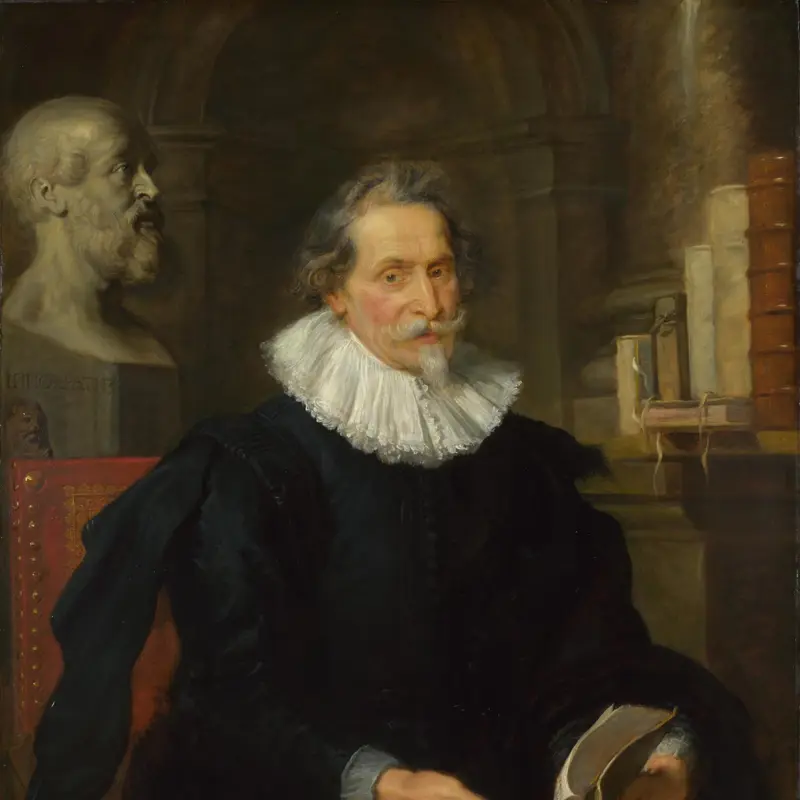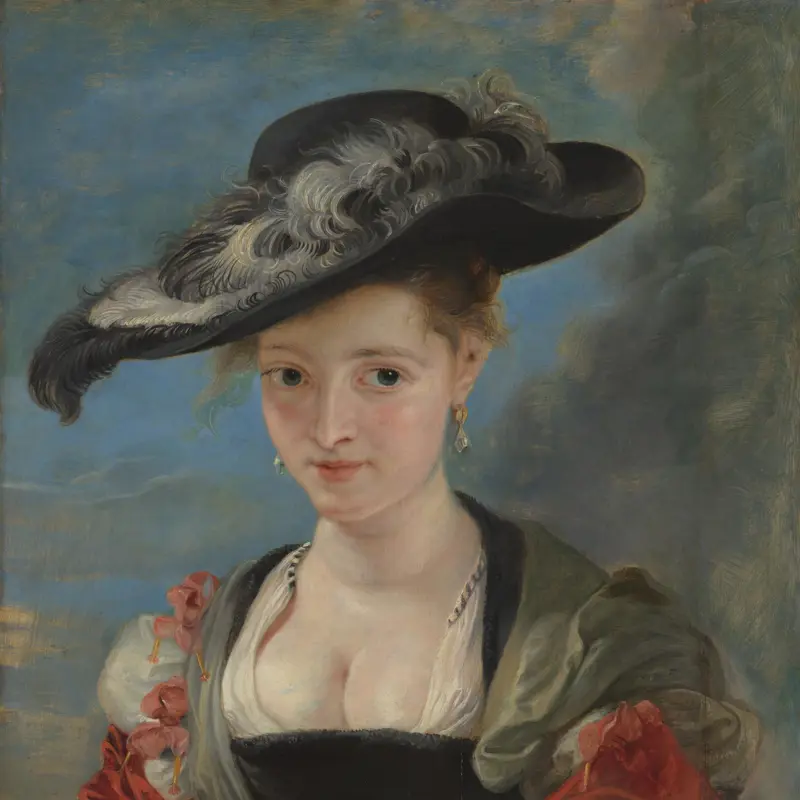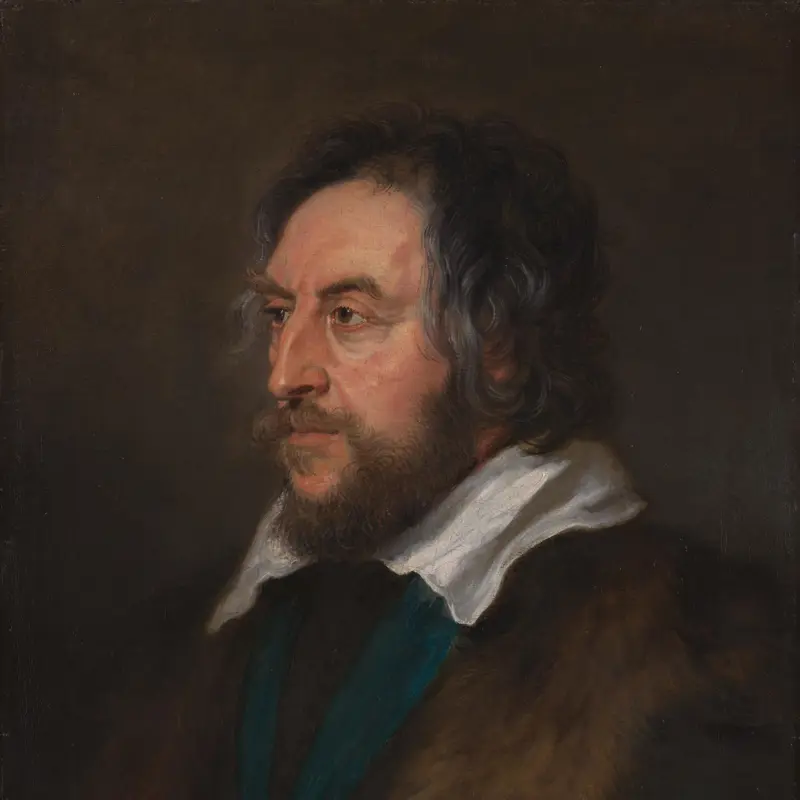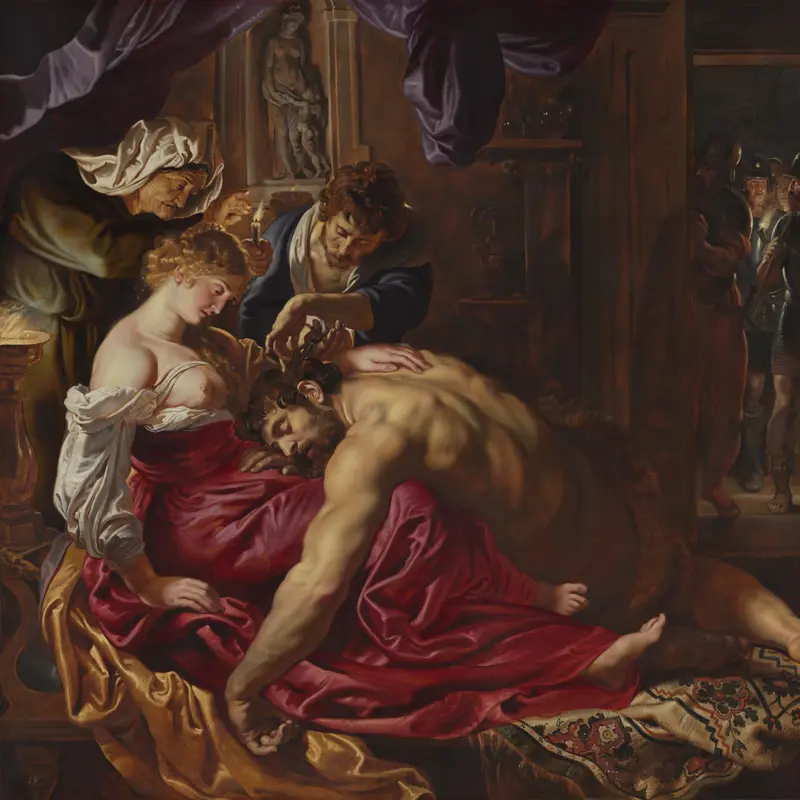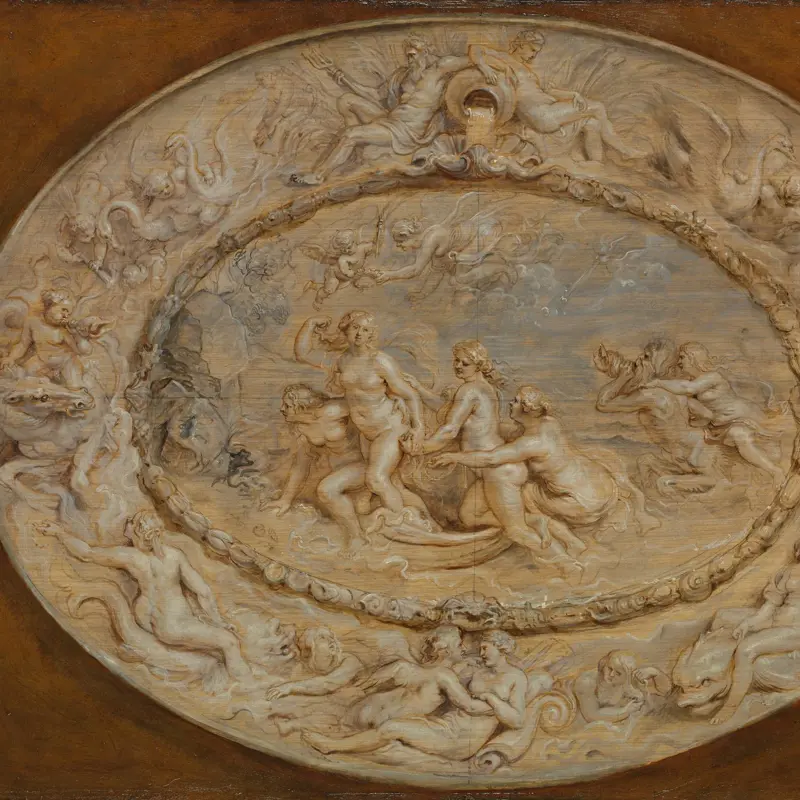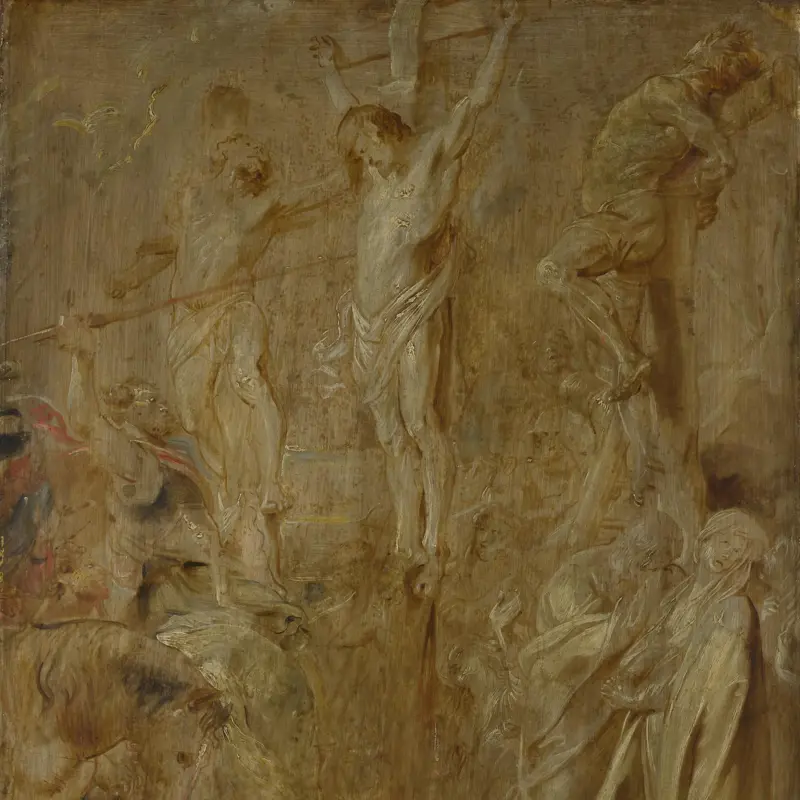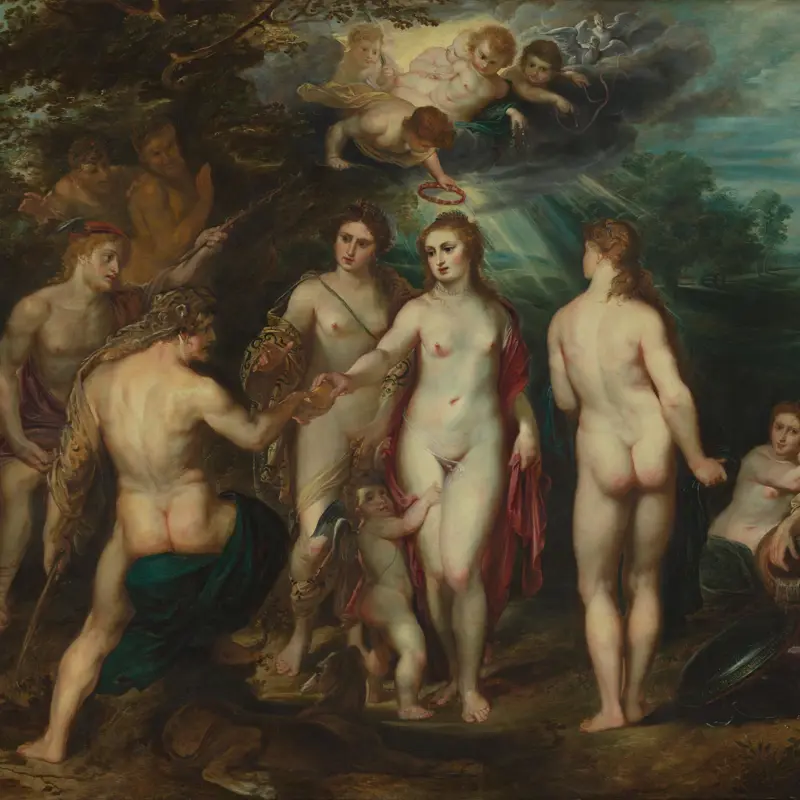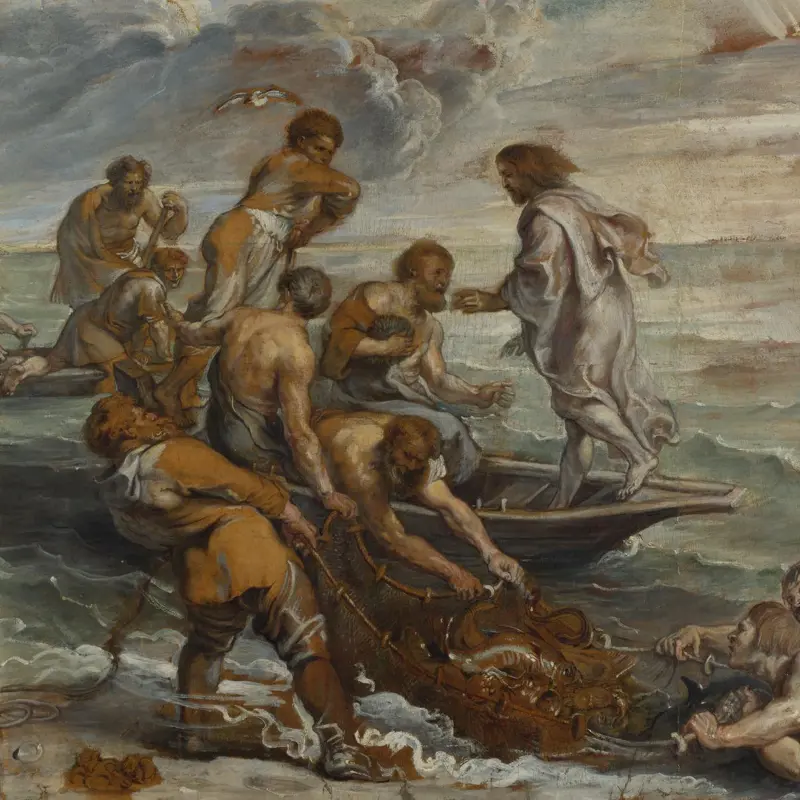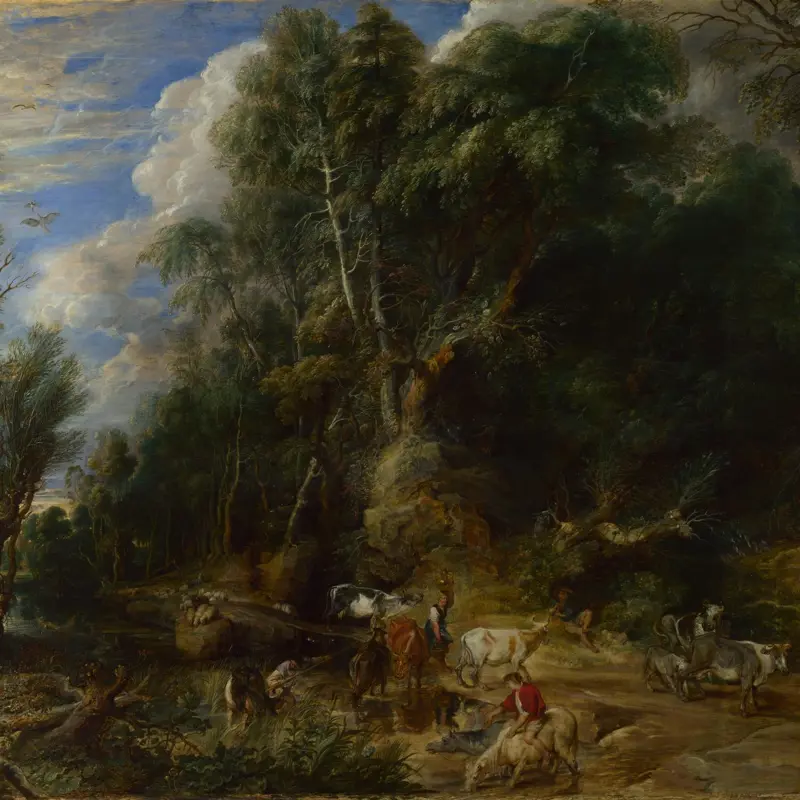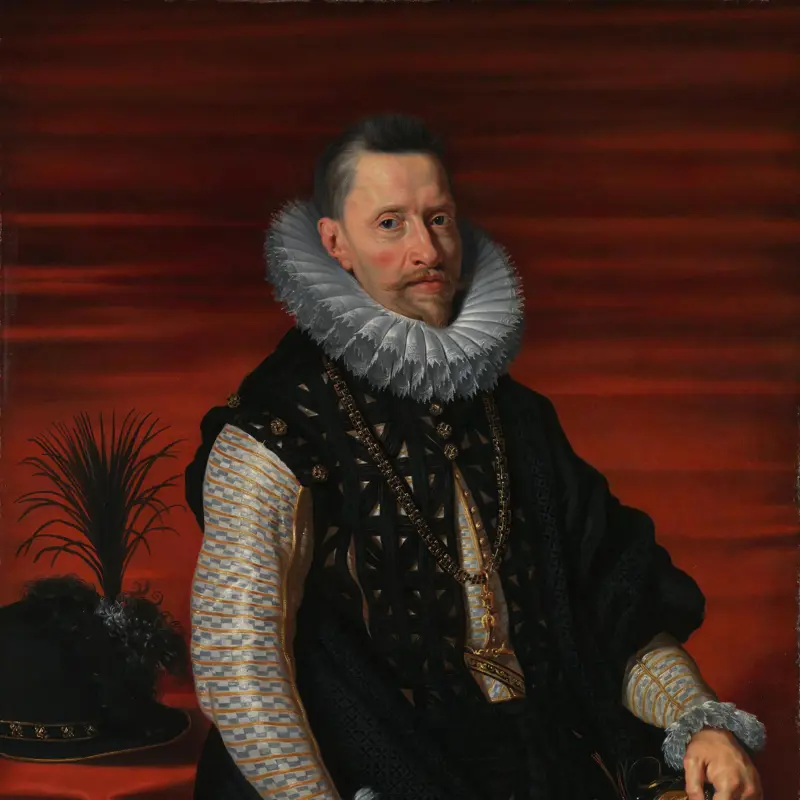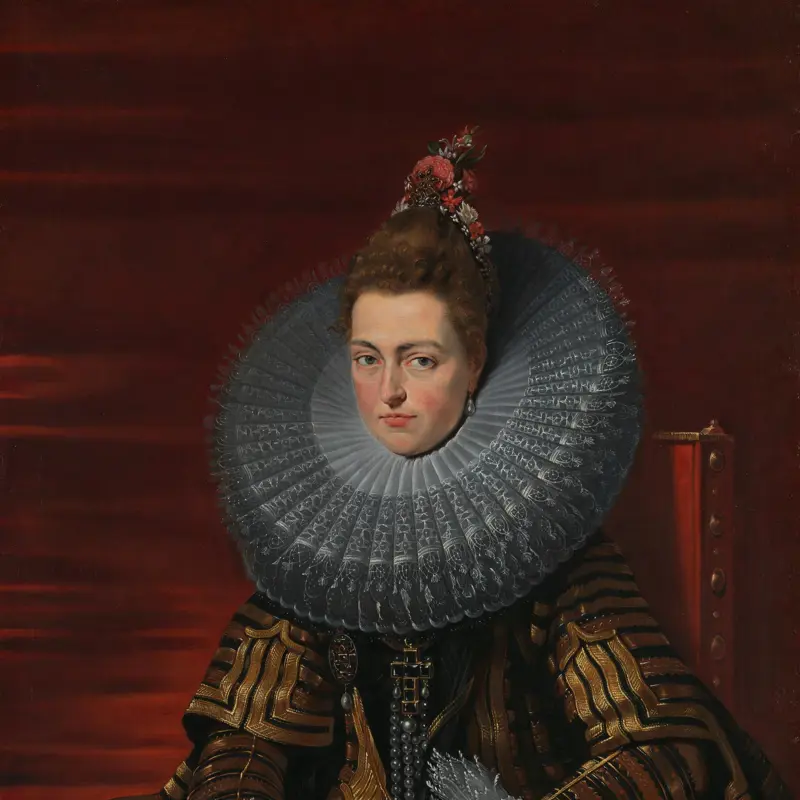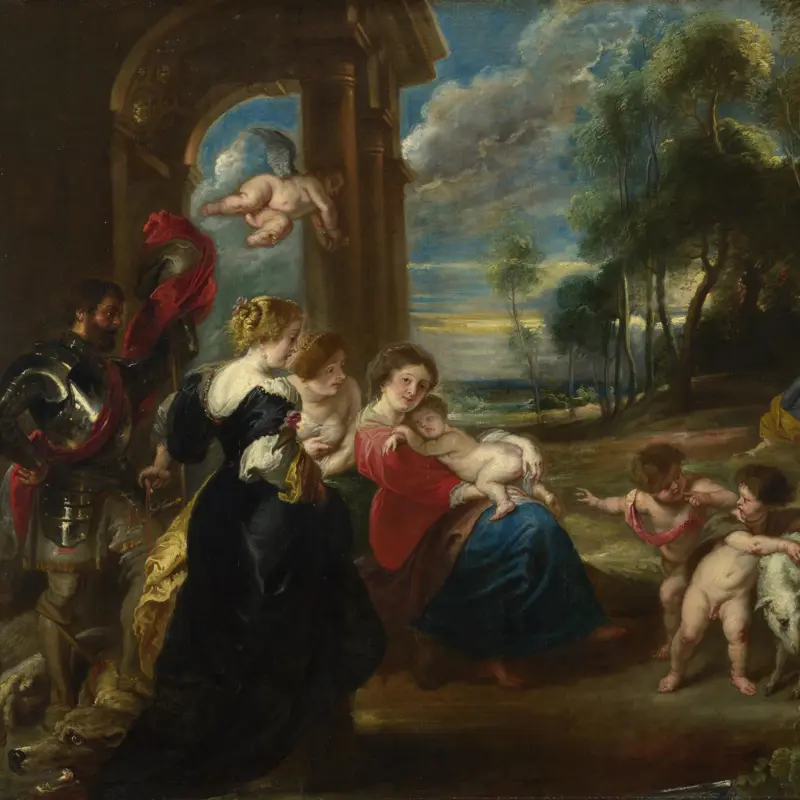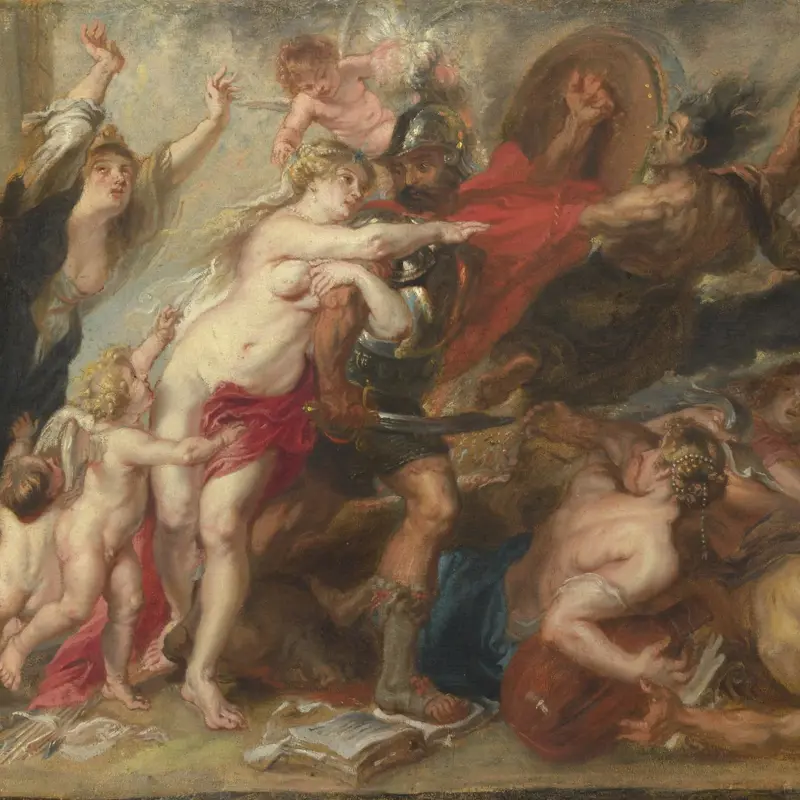Peter Paul Rubens, 'Oil Sketch for High Altarpiece, St Bavo, Ghent', 1611-12
About the group
Overview
These three oil sketches, or modelli, were made by Rubens in preparation for an altarpiece for St Bavo’s Cathedral, Ghent, which was commissioned by Bishop Maes around 1611. The central panel shows Saint Bavo, a Roman solider who left the military to join the Christian Church, standing on the steps of St Peter’s Church, Ghent. Having given away all his money, he is being received by Saints Amand and Floribert as a monk. The left panel shows Saint Bavo’s sisters, Gertrude and Begga, who followed their brother’s example by becoming nuns. On the right panel, King Clothar and his son King Dagobert argue with a herald of the Roman Emperor Mauritius about a rule that forbade soldiers from becoming monks.
Key facts
Details
- Full title
- Oil Sketch for High Altarpiece, St Bavo, Ghent
- Artist
- Peter Paul Rubens
- Artist dates
- 1577 - 1640
- Date made
- 1611-12
- Inventory number
- NG57
- Collection
- Main Collection
About this record
If you know more about this work or have spotted an error, please contact us. Please note that exhibition histories are listed from 2009 onwards. Bibliographies may not be complete; more comprehensive information is available in the National Gallery Library.
Works in the group
-
This scene makes up the central panel of an altarpiece Rubens made for St Bavo’s Cathedral, Ghent; this painting is a preliminary sketch for the work. Saints Amand and Floribert receive Saint Bavo, a former Roman soldier, on the steps of St Peter’s Church, also in Ghent.A cleric holds the black h...
-
This is an oil sketch Rubens made in preparation for an altarpiece for St Bavo’s Cathedral, Ghent; it shows the scene that appeared on the left panel. The two women wearing gold crowns are Saints Gertrude and Begga, the sisters of Saint Bavo (who appears in the central panel). Saint Bavo was a Ro...
-
Rubens made this oil sketch, along with two others, in preparation for an altarpiece commissioned for St Bavo’s Cathedral, Ghent. The central panel depicts Saint Bavo, a Roman soldier who left the military for the Christian Church, being received as a monk. This scene, in which King Clothar and h...

